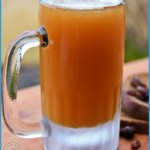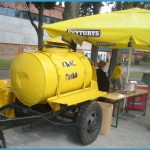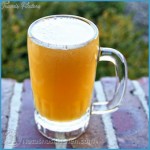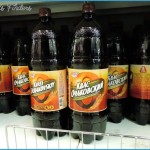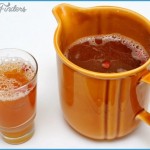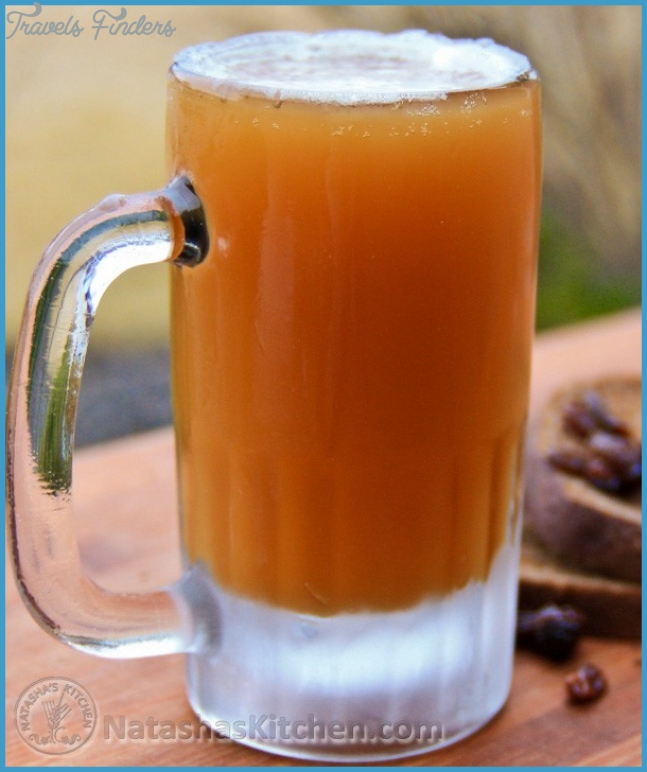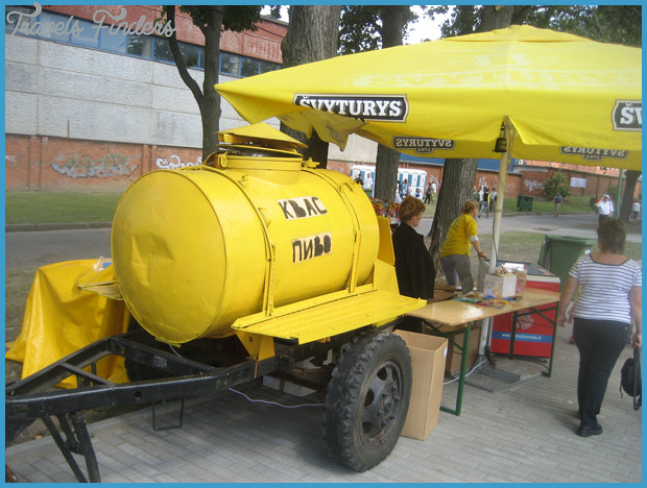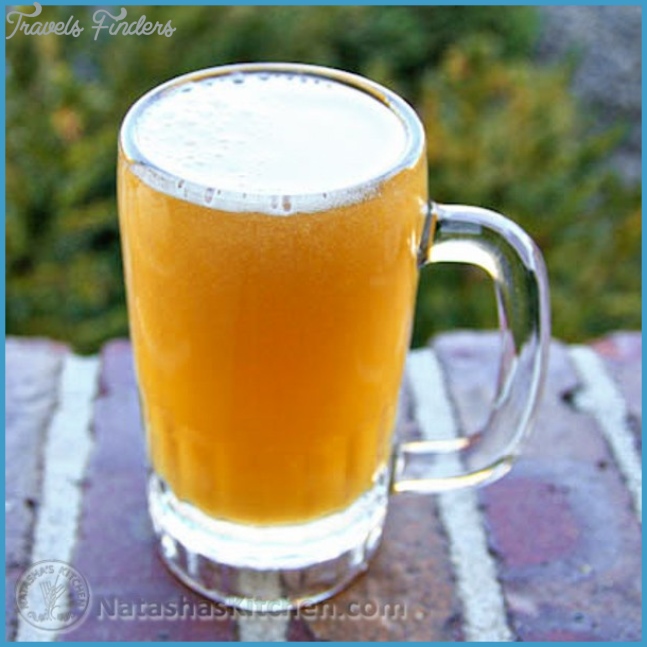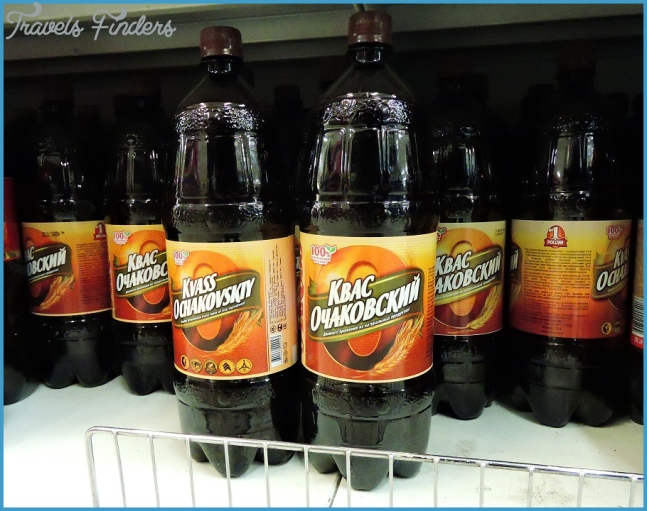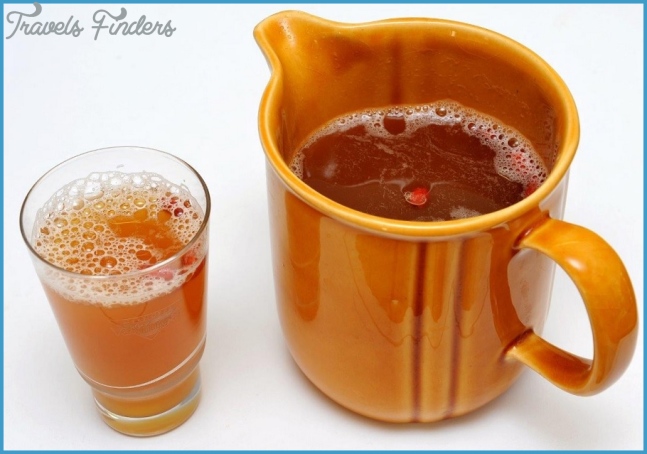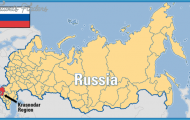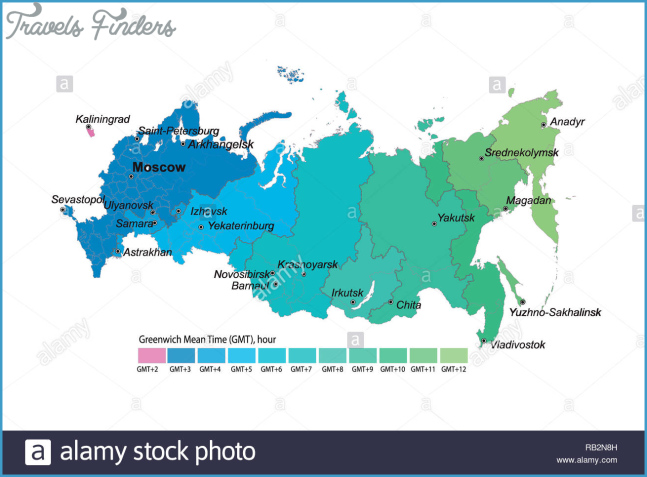TURNING BREAD INTO BEER
Ail unlikely resurgence in Russia’s bread-based, low-alcohol beer, Kvass, has seen the drink rapidly go from old-fashioned to new and fashionable.
Kvass is made using stale bread, plus fruit and spices, and is around 0.5%-2.0% ABV, making it more of a lightly fermented soft drink. There are major commercial brands of kvass brewed in Russia, varying geographically depending on whether the area prefers a sour or sweeter flavor. Restaurants have also started making their own kvass, brewing it to suit the different foods served, and this small-scale production is changing the appreciation of one of Russia’s famous homebrews—and that’s the part I’m most interested in, because it rejuvenates an old drink and makes it relevant and new.
Visit to Kvass in Russia Photo Gallery
In summer, trucks, which look like small fermentation tanks with big wheels, stop on street corners and dispense the drink directly. And summer is when most kvass is consumed, as it’s refreshing and cheap in the warmer weather. I couldn’t make it to Russia to drink kvass while researching this my blog, so it’s a personal Bucket List tick that I still want to achieve.
Kvass served from the tank.
Drink Lithuanian Farmhouse Ales
AND TASTE BEERS LIKE YOU’VE NEVER HAD BEFORE
At a time when drinkers were always looking for the newest styles, they realized they’d completely missed some very old styles of beer, with the Baltic beauty of Lithuania revealing a deep local beer culture and a whole range of beer styles that are unique to the country—no beers anywhere else in the world taste like these.
Farmhouse brewing has long traditions across Europe, but in most places it died out or turned into a commercial endeavor. Not so in Lithuania where it survived, in part thanks to the Soviet occupation, which saw the authorities take over commercial breweries, demanding that they made just six fixed recipes and also determining the total output of a brewery. Homebrewers, or farmbrewers, didn’t have such limitations, and with grain growing all around and enough local hops at their disposal, they continued to brew their beer, their way. Which is to say: not like any other beers brewed anywhere in the world.
When the Soviet hold was broken, the big brewers were slightly freed but, more importantly, the small, local brewers were able to become more commercial. Many of the brewers had learnt from their mothers or fathers, who learnt from their parents, and so on; recipes are unwritten and the processes are unscientific. This is how beer used to be made and it’s still made that way there today. Some brewers still make their own malt; some still grow their own hops or pick wild ones (sometimes with the hops made into a tea before being added, especially in the case of raw, or unboiled, beer); a lot of them use wooden brewing vessels and open fermentation tanks. But it’s the yeast that’s the really unique thing: something passed like a family treasure through the generations. It’s this yeast that separates Lithuanian farmhouse beers from all other beers and it has no equivalent or similar strains in any other beer.
Lithuanian beers to look for Kaimiskas, translating as “from the countryside,” is a general grouping of farmhouse beers made in a traditional way, meaning with homemade malts, wild hops, and the brewer’s ancestral yeast strain. The beer could be Sviesusis or Tamsusis, which is pale or dark; it may or may not be boiled during the brewing process, which is significant and adds to the beer’s instability and unique flavor profile. Fermentation can also happen at very high temperatures (around 86°F/30°C), which in turn kicks out unusual qualities. Jovaru Alus, which is unboiled and brewed by the “queen of Lithuanian farmhouse brewers,” is considered to be a great example of this type of beer: both sweet and bitter, with some chewy, nutty malts in the middle and some faraway fruitiness and spice mixing with fermentation flavors.
These beers may look like Kellerbier or Saison or even a hazy Best Bitter, but they do not taste like those beers. They are often full and sweet in the middle, yet they dry right out at the end; bitterness tends to be very low and you won’t find hop aroma; there’s an earthiness, something farm-y or cellar-like, which probably comes from a combination of the malt, yeast, and brewing process used. Brewing faults such as diacetyl, phenols, and esters (think banana, strawberry, apple, smoke) are not considered bad in these beers and are, in fact, a part of the flavor profiles; the beers are always unfiltered and unpasteurized, and their tastes vary from batch to batch.
Keptinis is an unusual type of Kaimiskas, which begins as baked barley bread. This baking gives caramelized qualities and extra sweetness when the bread is steeped in brewing water on its way to becoming beer. This is rare to find, but it’s an old beer type that’s not been lost to modern beer culture. The one to look out for is made by Cizo Alus, a cult figure in Lithuanian brewing. This beer is sweet, spicy, doughy, and filled with banana and other esters, but then still dry at the end, showing the gymnastic things these yeasts are capable of. You might also see Gira, which is made with rye bread and other fermentables such as starchy vegetables, fruit, and honey (similar to Russian Kvass, see opposite). It’s very low in alcohol (so sometimes not considered a beer) and may or may not be spiced—the ones I’ve tried had a funky, cola-like taste. And where to drink them
Vilnius is the most accessible city in which to drink these beers, with a variety of bars serving them—o en in very unique locations and with unique atmospheres. The drinking experience matches the unusual beers.
There are a few Snekutis bars and they are must-visits in Vilnius. They all serve a variety of farmhouse beers on tap and in bottle, plus rustic, home-cooked food, and it’s worth visiting all of them if you can as the beer choice differs (the Uzupio location is essentially a wooden shack and it’s brilliant). Try Sv. Stepono, g.8, Vilnius 01138 and the Uzupio bar, Polocko g.7A, Vilnius 01204.
Bambalyne (Stikliii g.7, Vilnius 01131) is a basement bar with a lot of different local beers to choose from, both on tap and in bo le. Alaus Namai (A. Gostauto g.8, Vilnius 01108) is a short walk from the center of town. This is basically a Soviet bunker that plays rock music and it’s wonderfully unique—you should be able to drink Cizo Alus there. There’s also Spunka (Uzupio g.9-1, Vilnius 01203), which has some Lithuanian craft beers on tap. This is a short walk from Snekutis Uzupio, making it worth stopping (if only to recalibrate your taste buds with something more familiar). There are some good craft beers in Lithuania—look for Sakiskii( alus and Dundulis alus.
If the descriptions seem vague, this is because these beers aren’t easy to understand and they change each time you drink them. But Lithuania’s idiosyncratic beer culture is one of the most interesting in the world for how this type of brewing has survived and may now even begin to thrive as a result of a new appreciation by beer drinkers. A visit to Vilnius to try different Lithuanian farmhouse beers is a must-do for serious beer drinkers.
If you want to know more about these beers, then the go-to source is Lars Marius Garshol, who is largely responsible for the current interest in Lithuanian brewing. Lars has written a “rough guide” to the country’s beers, which is available to download for free from his excellent website (www.garshol.priv.no).

